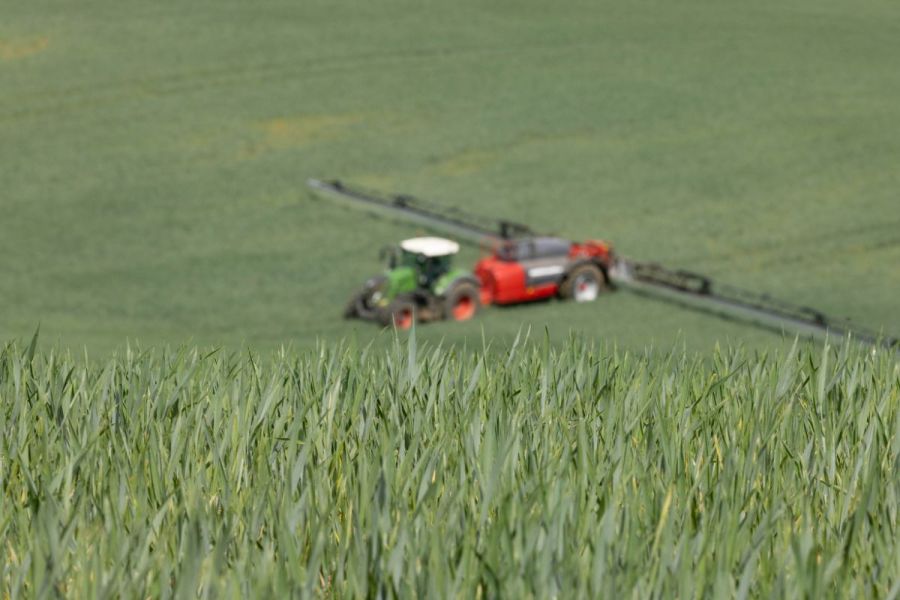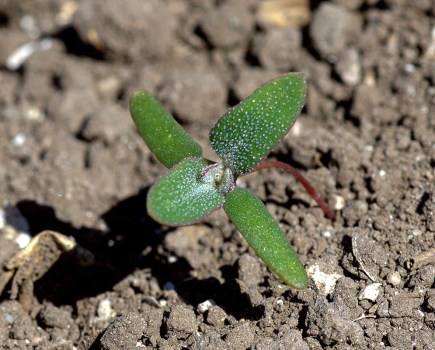It might be one of those years where it’s sorely tempting to tighten the belt where input spend is concerned, but this could be a false economy. CPM explores the benefits of a well-timed T2.
“The focus should be on getting as much yield as possible from winter cereals.”
By Melanie Jenkins
Variability, not just among crops but within each field, is causing agronomic headaches this year, meaning it’s particularly important to consider using the most effective chemistry available while ensuring that T2 applications are hitting fully emerged flag leaves.
Using the best fungicides in the arsenal at T2 is going to be especially vital on winter wheat crops this year, says Syngenta’s Joe Bagshaw. “Although there might be opportunities to cut rates, it’s important to be careful as we’re still very much in a situation where we should be adapting fungicide programmes to each individual field due to the variability.
“You might find that you’re in the position where you can consider reducing rates, but it’s not advisable to opt for less effective chemistry to save money. In lower risk situations at T2, where wheat has come through the winter and fertiliser has been applied, Elatus Era (benzovindiflupyr+ prothioconazole) is a good option,” he says.
However, if it continues to rain, as it has done, septoria risk could be significant, flags Joe. “If we do see high septoria risk, you’ll want to be using the best chemistry in that T2 slot to protect the top three leaves and the ear to keep the crop green to build yield and result in the best return.
“Using the best product available is also important as it supplies some curative activity on leaf two. Obviously, T1 is hitting leaf three, but leaf two is almost between the application timings, so you’ll want to aim for some curative activity onto this leaf at T2 as well as full protection onto the flag leaf for optimum control.”
Joe also advises mixing modes of action with actives such as fenpicoxamid/Inatreq for septoria control to help reduce resistance.
“Hopefully by T2, yellow rust will be under control from previous fungicide applications. However, going into T1, pressure looked high meaning growers will have to be wary and if rust is still present by T2, add a triazole to the mix. Where the disease persists after this point, I’d advise using a product such as Amistar (azoxystrobin). “Generally, the products being used at T2 will cover brown rust fairly well,” he adds.
If fusarium is an issue in quality wheats, he suggests including prothioconazole in the programme as this slows the disease’s progression up through the stem while helping to reduce the levels of inoculum in the plant.
“Managing gross margins and the bottom line is what keeps your farm profitable, but fungicides will generally provide a good return on investment. You can adapt rates, but despite the temptation this season, don’t drop the key T1 and T2 timings,” warns Joe.
“There’s more potential to cut back on T0 and to perhaps spend less at T3 on feed wheats, but this will depend on variety and disease risk. It’s still vital to optimise T1 and T2 to maintain yield and bring your crops back towards profitability. The margin over fungicide cost is there, and generally there’s a very good return on investment.”
Wherever possible, he suggests including a multi-site such as folpet. “We see the biggest benefit from multi-sites at T1 in terms of yield response, but if there’s a high risk of septoria this can help to protect flag leaves and keep them as clean as possible. Additionally, adding a multi-site can help to safeguard chemistry.
“Attention to detail is going to be key – choosing the correct products at the right rates and getting timings as accurate as possible. If new chemistry becomes available, you should be using the best option available at T2,” he adds.
As the earliest T2 timing on farm, spray applications for winter barley should be targeted as the ears are emerging, says Joe. “Generally, the biggest benefit is from applications made at the paintbrush stage or GS45, just as the awns are poking through. This provides protectant activity, especially when for multi-sites aimed at ramularia control, which should be applied at 1 l/ha for the best return on investment.
“Also consider using Amistar (azoxystrobin) earlier in the programme as this helps to keep the crop greener and can protect the crop to from ramularia later on,” he says. “SDHIs and triazoles also have some activity against the disease, so make sure you’re mixing modes of action to help reduce the risks.”
Product choice for T2 should be based on what was applied at T1 and how the season unfolds, explains Joe. “Ideally, we want to be on top of rusts and will have hopefully knocked out mildew by T2, but if rust does come in later, it’s important to have a product that covers all bases, such as Elatus Era. In conventional barley there’s generally a greater yield benefit from applying it at T1, but T2 is an important timing to maintain control of net blotch, rhynchosporium and brown rust.”
Joe highlights that it’s important to not leave a big gap between T1 and T2 applications. “Aim for three weeks and don’t push it beyond four weeks. It’s a reasonably tight window, so ensure you’ve applied the appropriate rates to achieve persistency in disease control.”
In terms of timings, spring barley requires targeting at T2. “It’s been a frustrating season for growers on many fronts, but a number of those who’ve opted to grow spring barley are in a difficult situation because they’ve struggled to get it drilled. Where the crop has gone in late, growers may be looking to cut back on their fungicide spend as yield potential is reduced,” says Joe. “T2 is the main timing for spring crops, so save your best chemistry for this application.”
As with winter barley, Joe advises including a multi-site in spring barley programmes to reduce the risk of ramularia. “Elatus Era fits well in the T2 slot, and overall, an SDHI at this timing is going to help give the best disease control and also keeps the crop and stem healthy reducing brackling risk,” he notes.
The difficult season might mean growers have opted to grow back-to-back cereals, observes Joe. “If this is the case, be wary of net blotch and rhynchosporium. and Make sure you account for these risks and if you’re in this situation, include prothioconazole and a robust fungicide such as Elatus Era in your programme.”
Across all cereals, PGRs will be important this year, so Joe advises applying Moddus (trinexapac-ethyl) or chlormequat early. “With how wet it’s been this year, there could be a lot of root lodging, so ensure you’re looking after the whole canopy.
“The focus should be on getting as much yield as possible from winter cereals. And while there’s potential to reduce inputs on later drilled winter crops and early drilled spring crops, this will mean adapting rates rather than changing products.,” concludes Joe.
Looking north
In the North of England and into Scotland, wheat crops that were planted in good time in September have fared best, but Scottish Agronomy’s Adam Christie feels that in many cases, those who persisted in drilling later, are going to struggle.
“It’s going to be vital to use the best available products at T2. We have some good looking crops but a lot of growers have compromised areas, whether these are late drilled or weather damaged. Subsequently, it’s likely many will be struggling to match their fungicide spend to the potential output and market value, it’s almost the perfect storm. Crops are likely going to be worth less but the option to spend less on crop protection isn’t there.”
Skyscraper is the dominant wheat variety in Scotland, meaning Adam advocates using the best, most innovative chemistry available to manage its susceptibility to septoria. “In essence, that involves using Revysol and Inatreq.”
Where wheat crops are struggling, he sees a role for applying Elatus Era, Vimoy (isoflucypram) or Ascra Xpro (bixafen+ fluopyram). “The difficulty nowadays is you either control disease or you don’t, there’s no middle ground and very few cheaper options.
The biggest challenge for growers at T2 will be managing septoria, he says. “The issue is going to be identifying when peak infection will fall, but I suspect it could well be early.”
Although rusts are less of an issue further north and into Scotland, if they are present, Adam advises the key timing to tackle it is T0. “So long as we can at least apply tebuconazole, this is usually enough to control it, but if it’s still present after T0, Elatus Era is a good option in a high risk situation.”
He advocates including a multi-site into any fungicide programme, primarily a folpet-based product. “This should be in the tank for resistance management, but there’s also a role for sulphur-based products, especially given how we’re seeing an increasing mildew problem in Scotland,” he adds.
For all the challenges Scottish growers have with fungicide chemistry for wheat, the armoury is still fairly robust in barley, says Adam. “T1 applications in winter barley are likely to be prothioconazole-based, and folpet could be included here. Some growers will opt for Ascra Xpro or Elatus Era plus folpet, and Kayak (cyprodinil) is still an option. In higher rhynchosporium situations, prothioconazole combined with Kayak is strong, and this also performs well against stem-based diseases such as eyespot.”
Rhynchosporium is the biggest issue, but Adam warns to not underestimate mildew. “Hopefully by T2 we’ll have taken rhynchosporium out of the equation, but we can’t forget about it as a challenge. The main focus is then on targeting ramularia, but net blotch is becoming more common, as well as mildew and pockets of brown rust.
“I’d suggest using Elatus Era in this slot to control all-round disease control, but if it’s a riskier year for the ramularia switch to Revystar instead and always include folpet.”
The silver lining amid the struggles for growers this year is the malting spring barley price, says Adam, which adds flexibility. “Our challenge with disease control in spring barley is the short, intense growing season. Growers might find they’re having to apply a herbicide, trace elements and one or two PGRs to what might be a small plant at T1, so there’s a question around whether to also include a fungicide.
“If there’s no disease in the crop, we’d suggest not adding one and leaving more budget to use at T2. But if there’s any hint of rhynchosporium, add a low rate of prothioconazole with folpet at T1,” he says.
At T2, if there’s a mixed range of diseases present, but not high levels of ramularia, Adam advises using Elatus Era or Ascra XPro. “But if ramularia is an issue, switch to Revystar.”
Overall, he believes growers are either going to rely on help from Mother Nature, or they’ll have to invest in a high fungicide spend. “Even with the best crops, the economics might not appear to add up. However, fungicide spend will amount to less than 10% of the cost of producing the crop, whereas fixed costs are equal to 40-50%. So trying to save yourself 1-2% is a false economy as the penalty for getting things wrong has never been greater.”
This article was taken from the latest issue of CPM. Read the article in full here.
For more articles like this, subscribe here.
Sign up for Crop Production Magazine’s FREE e-newsletter here.




